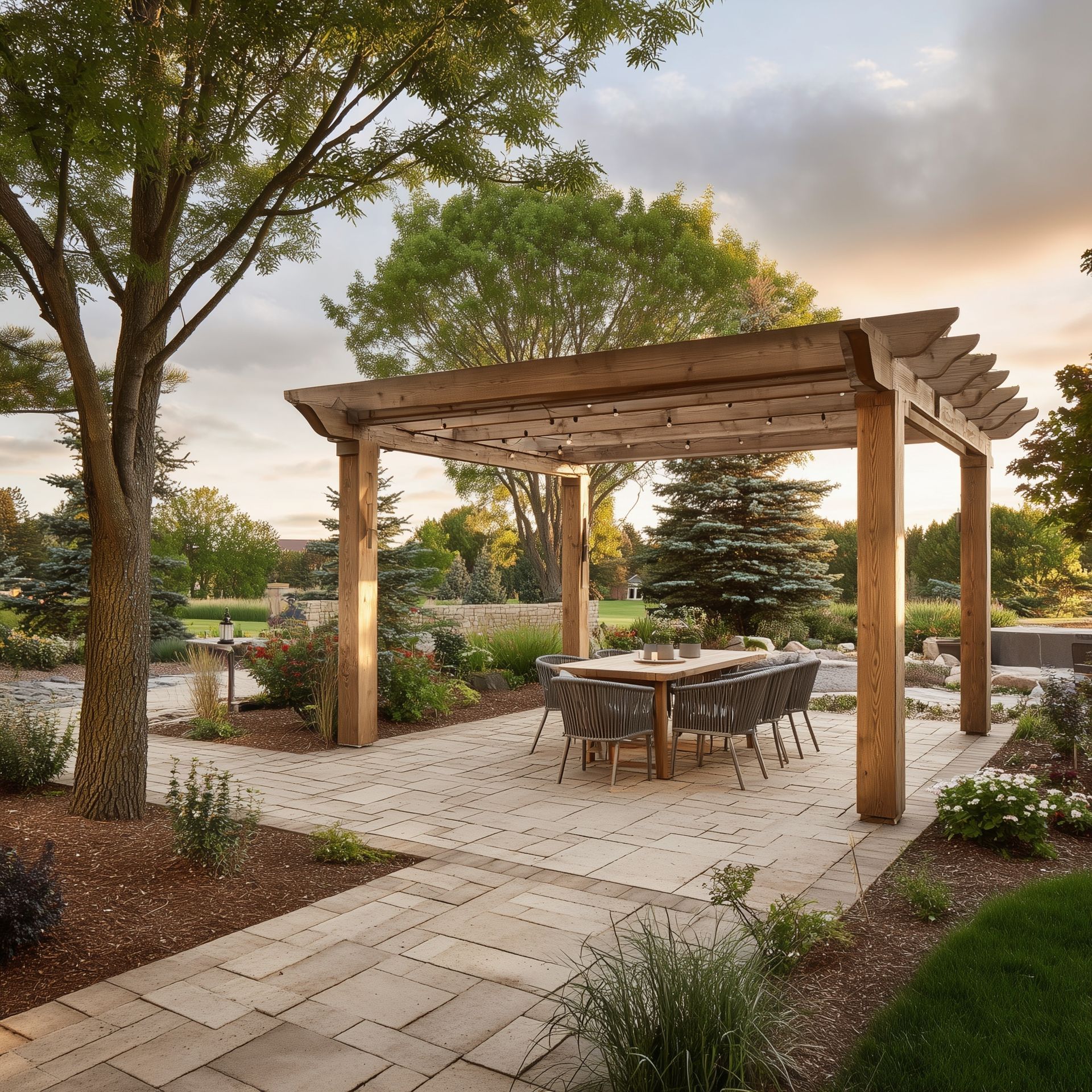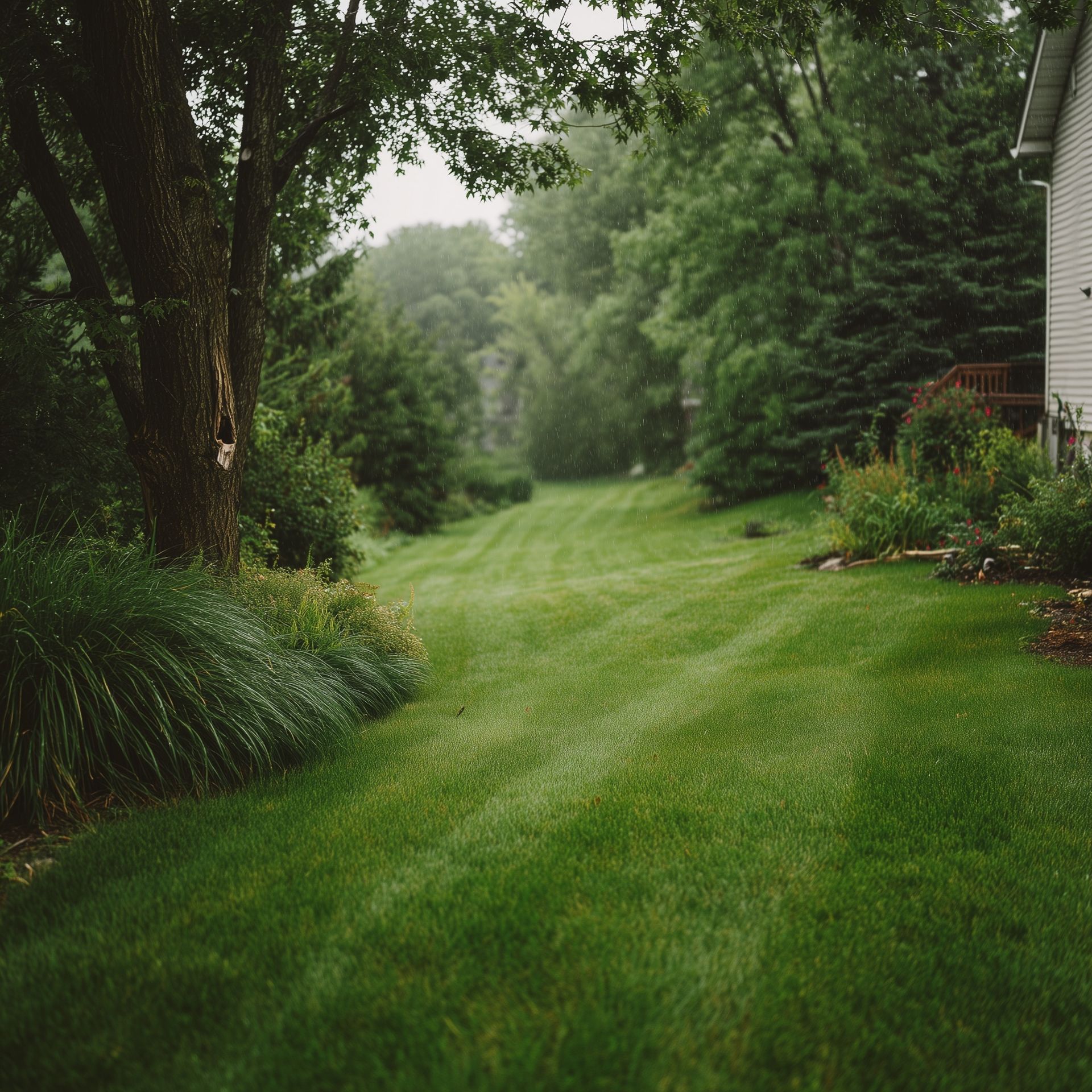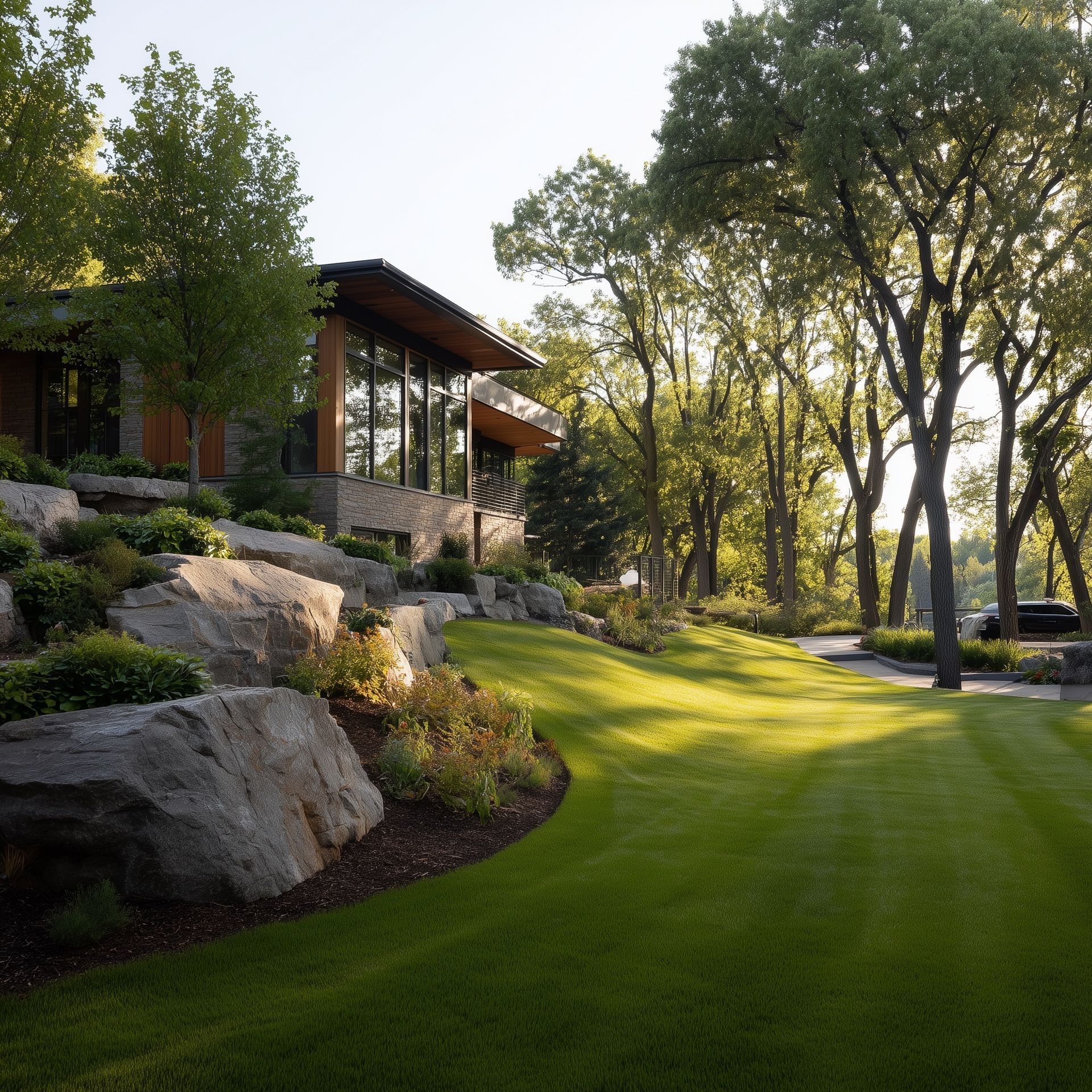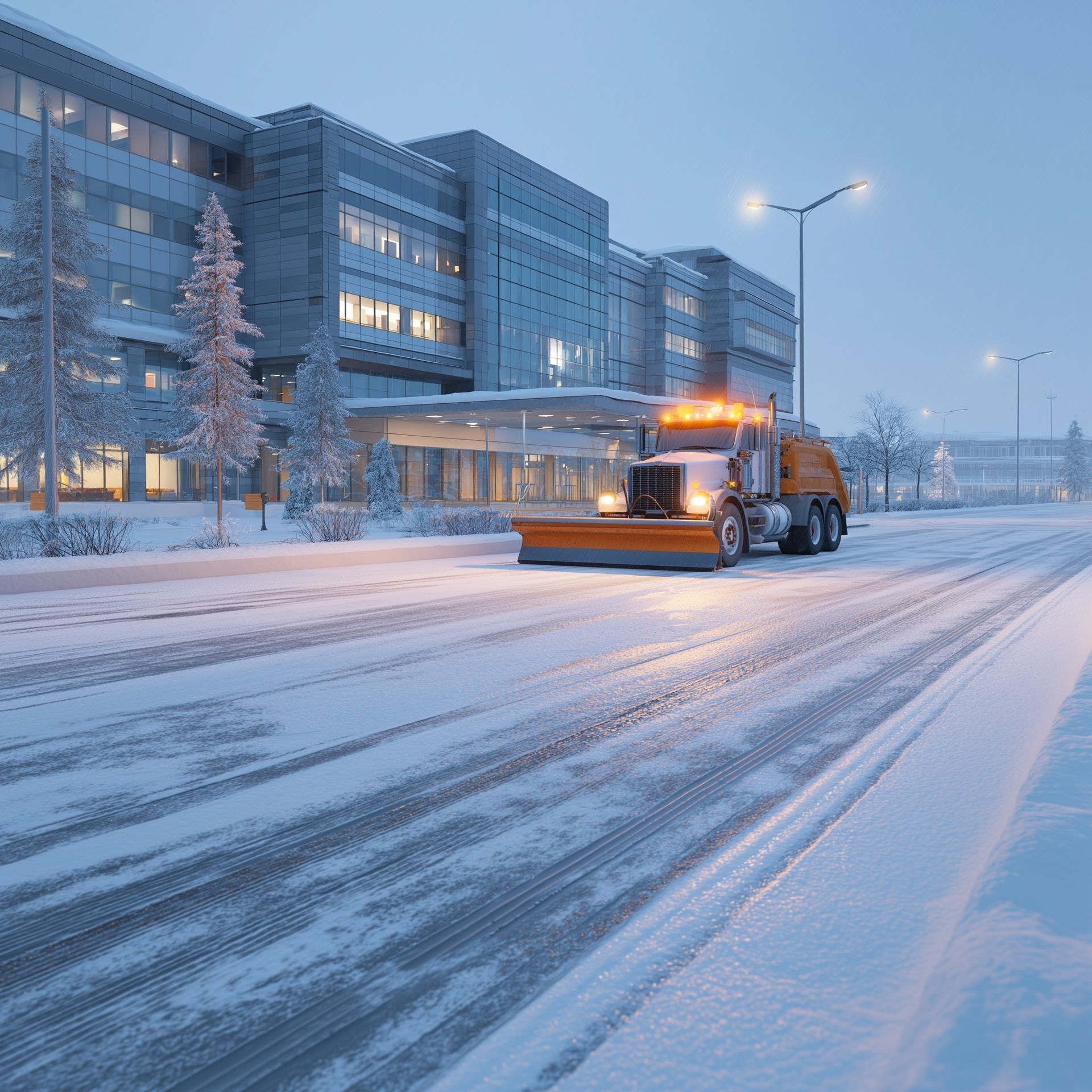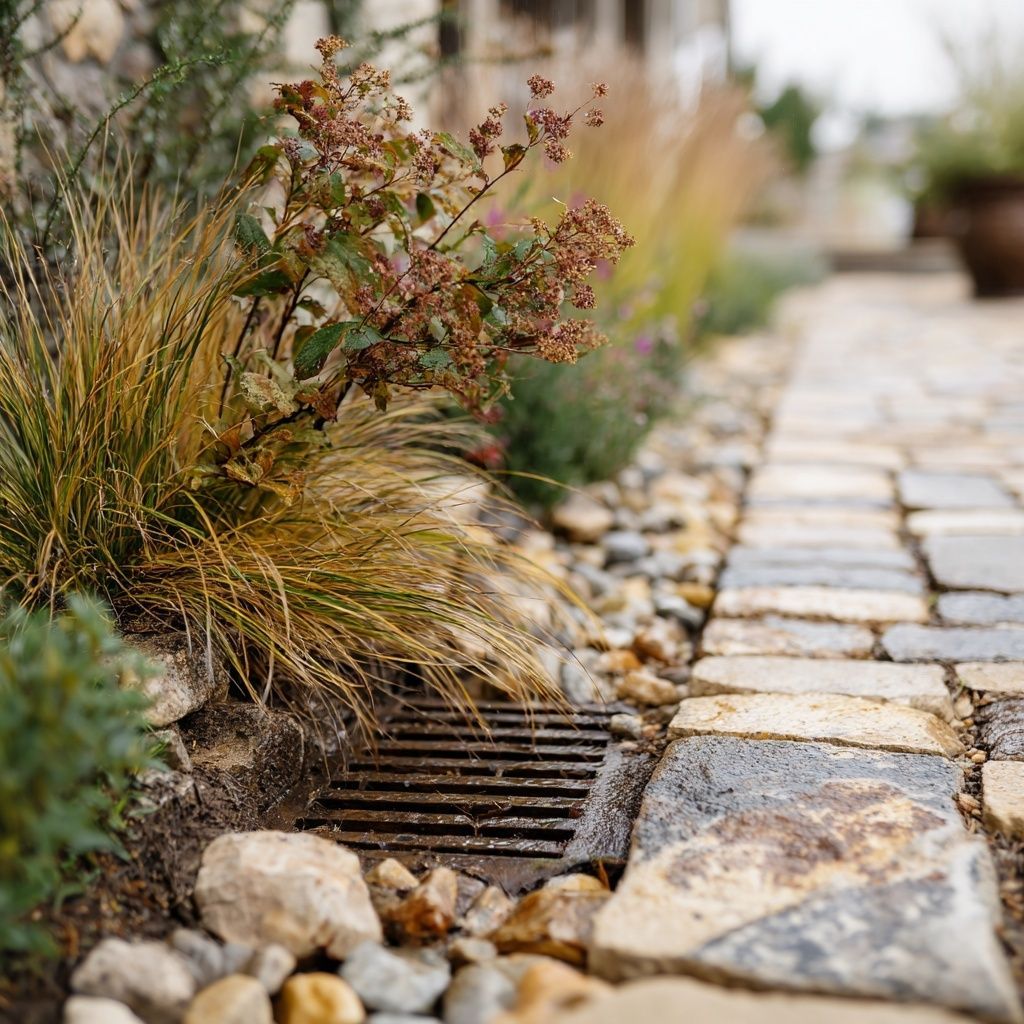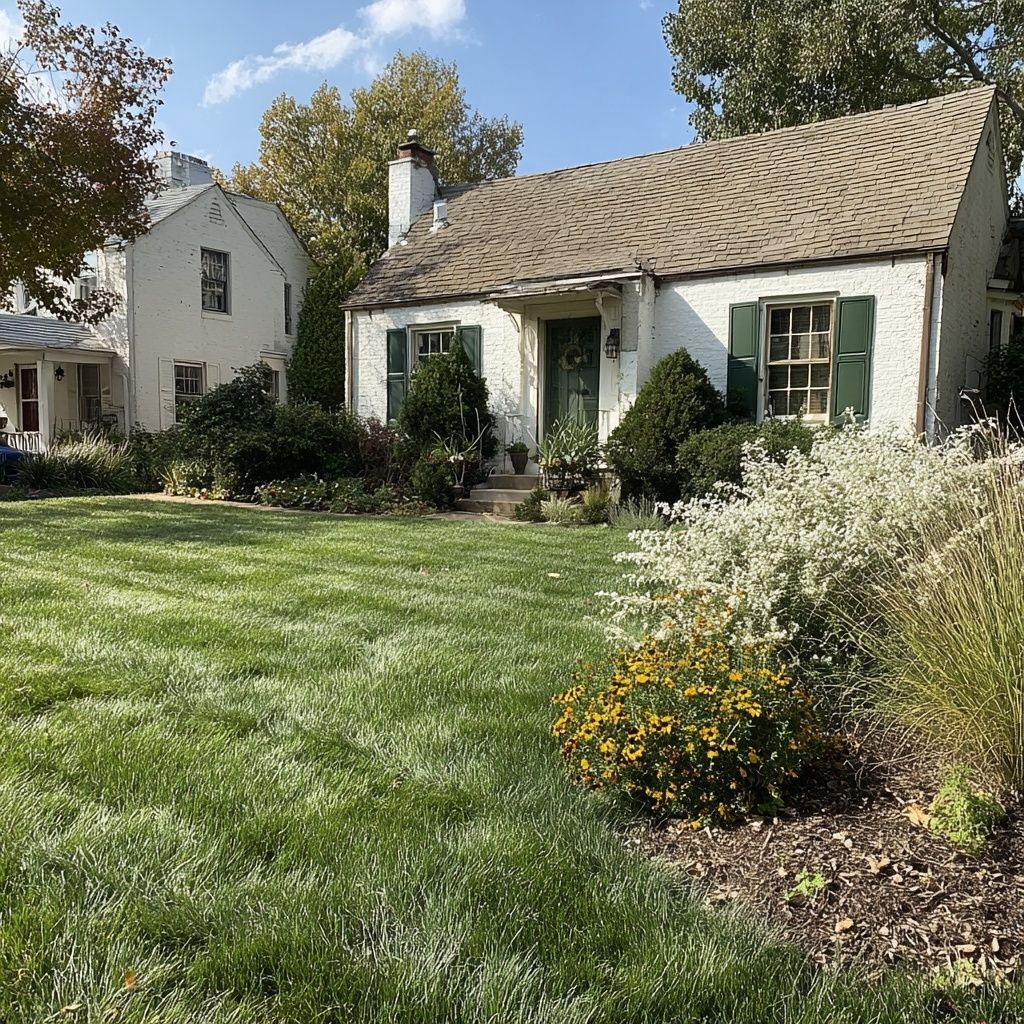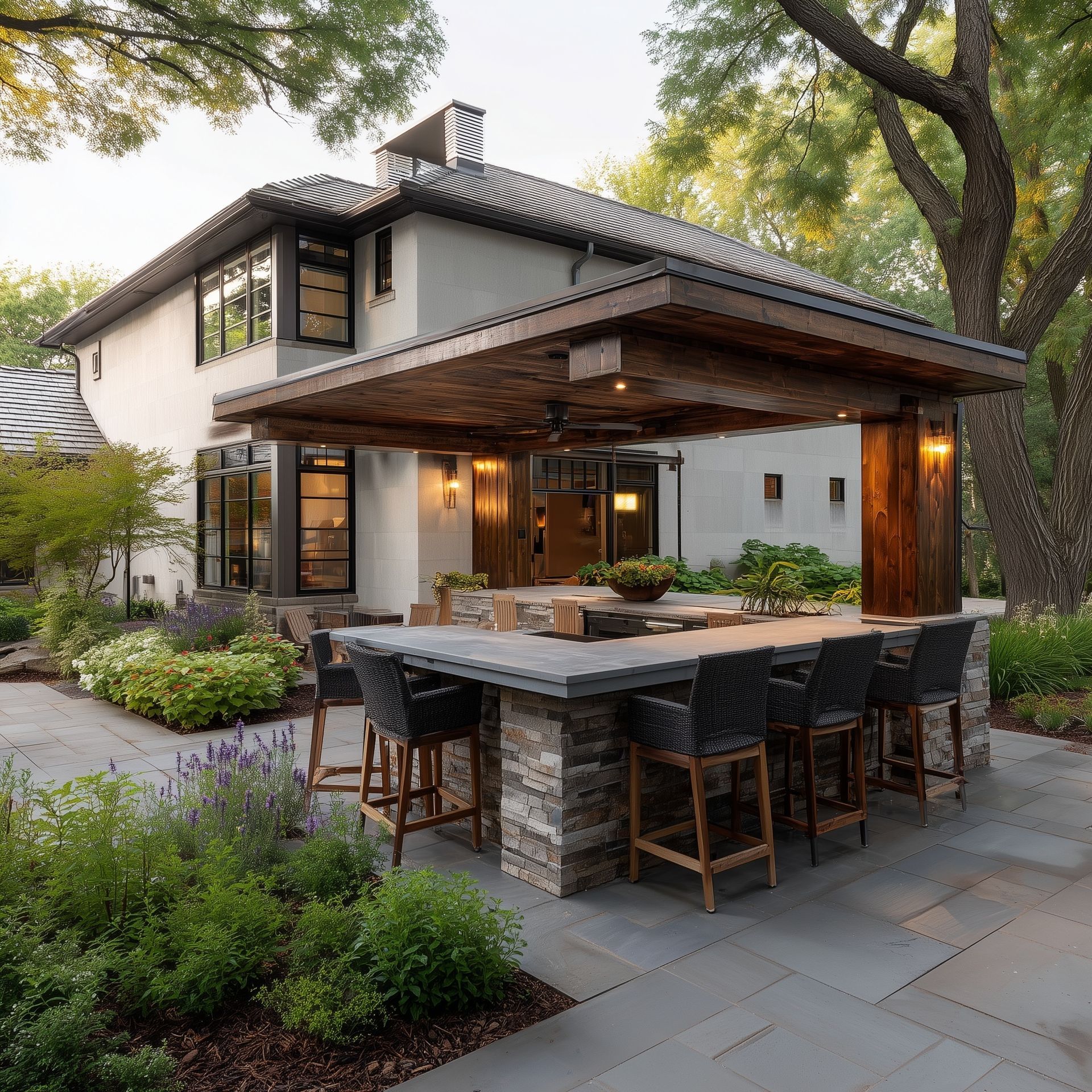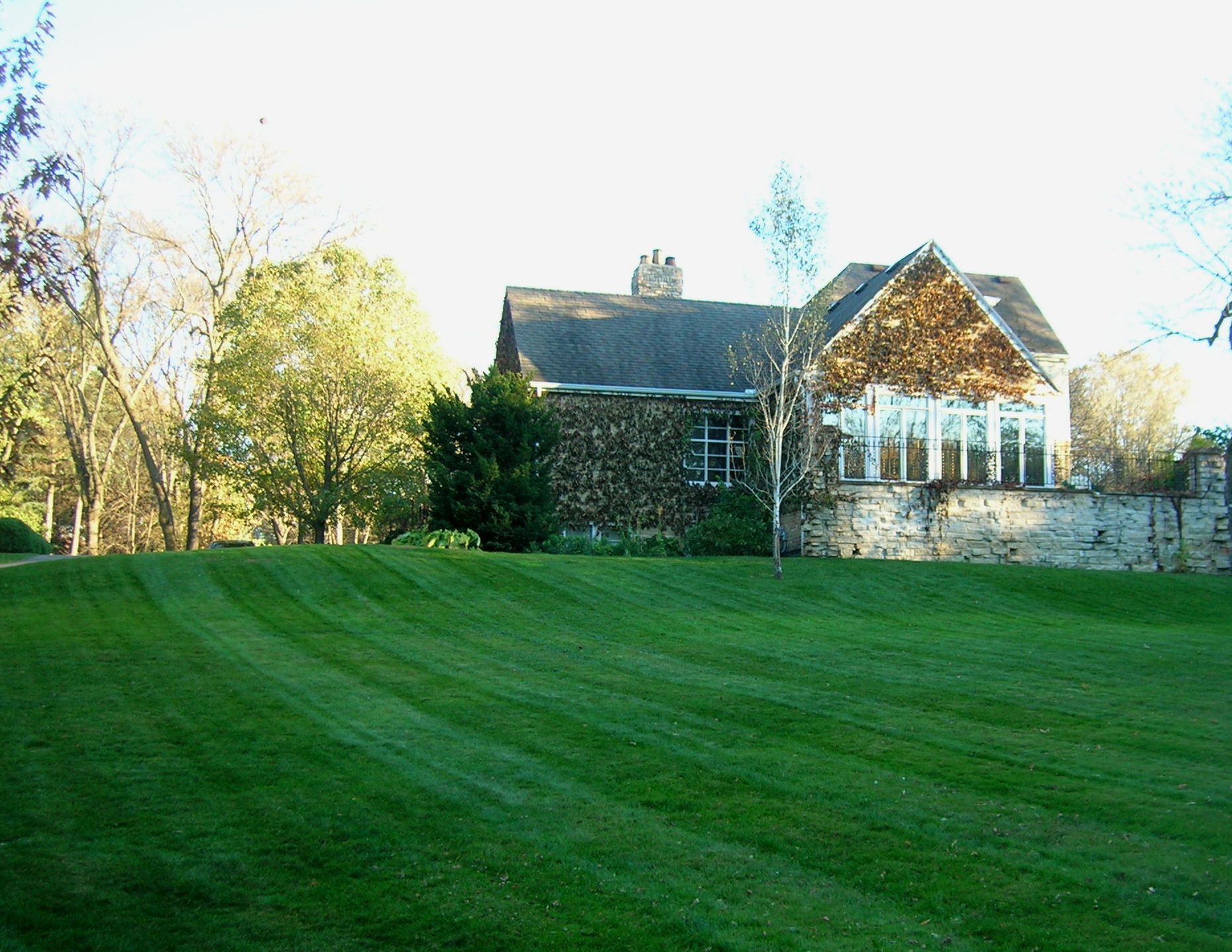5 Tips to Keep Your Lawn Healthy All Summer Long
Minnesota summers can be hard on lawns. Sometimes it seems inevitable that lawns will turn brown and brittle, but that doesn’t have to be the case. This year, keep your lawn looking green and lush with a few tips from the experts at KG Landscape.
1) Mow High
As we discussed in 6 Myths about Minnesota Lawn Care , keeping your lawn mowed high is better for it than shearing it off close to the ground. (Yes, golf courses get away with it, but they also have people on staff whose job it is to keep their greens healthy.) Grass needs some length to keep growing, as photosynthesis can’t occur with just a stub of stalk. Mowing high also forces the roots to grow deeper into the soil, making the plant less vulnerable to disease and reducing the need for watering. The ideal grass height for most residential lawns is two to three inches is ideal for most residential lawns—and keep in mind that you don’t want to cut off more than a third of the height at any one time. Cutting more could shock the grass, causing it to die off.
2) Fertilize (But Don’t Overdo It)
Feeding your lawn the nutrients it needs throughout the summer is a great way to keep it healthy. However, there’s a fine balance to be struck. Over-fertilizing, especially when summer is at its hottest, can harm your lawn. Fertilizing stimulates growth, and if your lawn is already stressed, that process can use more energy than the grass can spare. For this reason, our fertilizer packages’ mid-summer application includes a mix of slow-release nitrogen and potash fertilizers. These will help strengthen your lawn, rather than tax it. Slow-release fertilizers are your best bet to keep your lawn looking lush and green.
3) Water
As mentioned in tip #1, long grass needs less water than short grass—but it does need water. For best results , water your lawn in the morning, before the day heats up. We also recommend giving your lawn a deep soaking every couple days rather than a light sprinkling every day. This will encourage the grass to grow deeper roots, helping it become more resilient if there is a drought or the city restricts water usage. You’ll want to mimic natural rainfall with these deep soakings. Most sources say your lawn needs about an inch of water every week, and an irrigation system can help regulate this.
4) Keep Off the Grass
Bonus tip: If your lawn does see a lot of traffic through the summer, aerating and overseeding in the fall can help your lawn bounce back the following spring. Aeration will reduce soil compaction and allow water and nutrients to reach the grass’s roots again. Overseeding afterward will help new grass sprout, giving seeds direct contact with the soil.
5) Plant the Correct Blend
In Minnesota, choosing the right type of grass for our climate is tricky. After all, we have to deal with bitterly cold winters and steaming hot summers. When we plant grass seed for customers, we use a custom mix of Kentucky bluegrass, perennial ryegrass, and fine fescues. (This blend is also recommended by the University of Minnesota Extension Service .) It is a cool-season blend, growing best in temperatures between 60 and 80 degrees, and it works well on Minnesota lawns despite our hot summers. When this cool-season blend is grown, it will drop its seeds in mid-summer, the seeds will germinate in late summer to early fall, and the new grass will spend the fall growing and getting strong enough to survive the winter.
With these lawn care tips, you can keep your lawn healthy and green even throughout the hottest months of the year. And if your lawn needs some TLC, we can help you decide on a plan to get it back into shape. Call us at 763-568-7251 or use our quote system to get in touch today.
